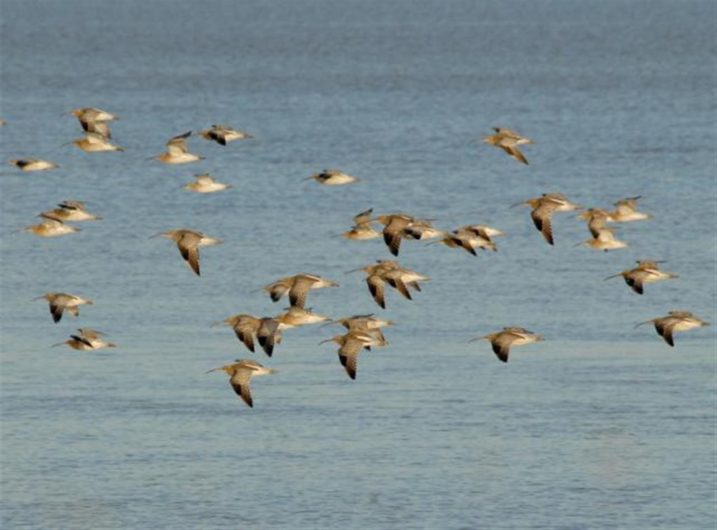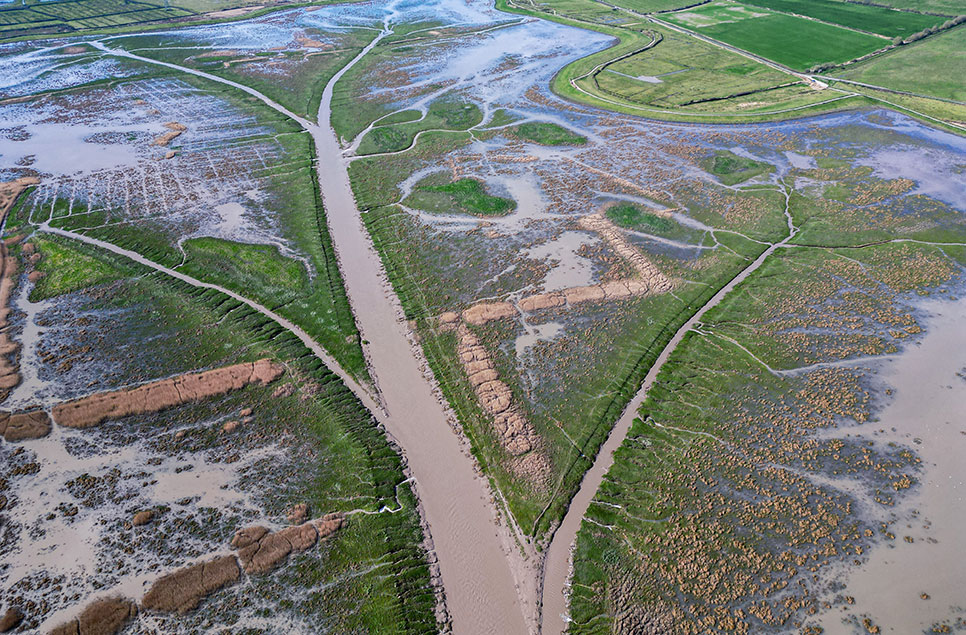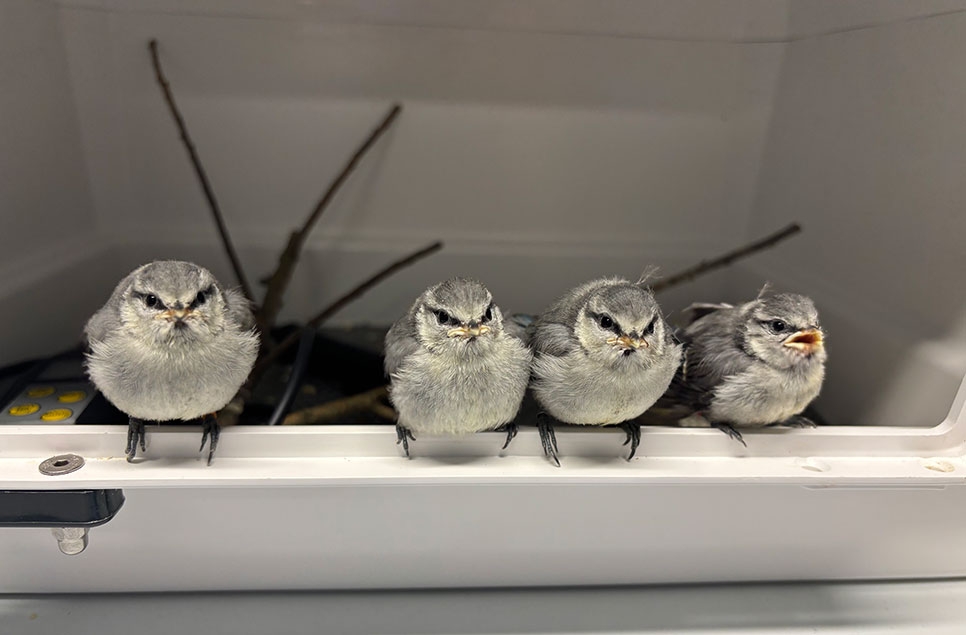Latest figures reveal current state of UK’s birds
More than one quarter of UK birds are in need of urgent conservation effort with curlew, puffin and nightingale joining the growing list of threatened species – but there is good news for some, according to a new report from conservation bodies including the Wildfowl & Wetlands Trust (WWT).
The state of the UK’s birds 2016 (SUKB) report - the one-stop shop for all the latest results from bird surveys and monitoring studies - highlights how more than a quarter of the UK’s regularly-occurring bird species are now what conservationists refer to as ‘Red-listed’.
Many of these are due to severe recent declines in numbers and/or range in the UK. And eight are considered at risk of global extinction.
Downward trends for upland species continue, with five added to the Red List; giving cause for concern. Europe’s largest and most distinctive wader – the curlew – has been added to the Red List and is joined by dotterel, whinchat, grey wagtail and merlin. This highlights the fact many of the UK’s upland species are in increasing trouble with the total number of upland birds red-listed now.
Hosting up to a quarter of the global breeding population of curlew, the UK could be considered one of the most important countries in the world for breeding curlews. But in recent decades, numbers have almost halved due to habitat loss. With a much smaller population, predators are now having an effect on what was a resilient population.
The curlew is considered ‘near threatened’ globally and with urgent action required to halt their decline, an International Single Species Action Plan has been created.
Dr Geoff Hilton, WWT Head of Conservation Science, said:
"The call of the curlew is one of the really magical elements of British nature, celebrated in poetry and song. Now we know that we are losing them; fewer and fewer people are getting to experience their song.
"But the curlew has one big thing in its favour: it is loved by many, many people. I’ve seen the enthusiasm and determination to turn their fortunes around – from farmers, conservationists and the public – and this convinces me that we can do so. "

Dr Daniel Hayhow, RSPB Conservation Scientist, said:
“Curlews are instantly recognisable on winter estuaries or summer moors by their striking long, curved beak, long legs and evocative call. They are one of our most charismatic birds and also one of our most important.
“The state of the UKs birds report shows that through land management, new research and existing data, the International Single Species Action Plan aims to understand the key causes of curlew declines across the UK and the Republic of Ireland and take action to reverse this trend.”
James Pearce-Higgins, Director of Science at BTO, said:
“The BTO is working with others on a programme of research to understand the causes of curlew decline and guide potential management solutions. This involves analyses of long-term data collected by thousands of volunteers, using novel tracking technology to study the needs of individual birds, and working with local enthusiasts to inform the recovery of local populations”
Patrick Lindley, NRW’s Senior Terrestrial / Marine Ornithologist, said:
“The fourth review of Birds of Conservation Concern (BoCC) assessed 244 species and shows the expanding number of upland birds moving onto the red list.
“Sadly, curlew is one these species and the State of UK’s Birds Report further highlights the extent of decline, a staggering 64% over 45 years, of this iconic upland breeding wader.
“The curlew is now considered the most pressing bird conservation priority in the UK and it is only through collaborative working and engagement that there is a chance to reverse this trend so that the evocative call of the curlew can once again be heard across its former range.”
The report contains good news for some species. Recent surveys are highlighted for golden eagles, cirl buntings, and winter thrushes. Golden eagle numbers have increased by 15% since the previous survey in 2003. There is good news for cirl buntings too, which are now estimated to have over 1,000 breeding pairs. The winter thrushes survey shows how important the UK is for continental migrating birds.
In addition to these successes, a number of species have moved from the Red list to the Amber or Green lists. Two species, the bittern and nightjar, have moved from Red to Amber thanks to the creation and management of suitable habitat, and an additional 22 species have moved from the Amber to the Green list meaning they are now of the lowest conservation concern. Most notably the red kite, once one of the UK’s most threatened species, is now on the Green list thanks to the efforts of conservationists and landowners. These successes demonstrate that there is cause for hope for other Red-listed species and that targeted conservation action can make a real difference.
James Williams, Biodiversity Indicators Manager at JNCC, said:
“The biodiversity indicators allow the general public to see at a glance how Britain's wildlife is faring without having to digest the complexity of the science behind them.”
Andy Douse, Scottish Natural Heritage (SNH) senior ornithologist, said:
“Scotland’s uplands are particularly important for species such as whinchat, merlin and dotterel in the montane zone. We need to understand the reasons for these changes and the management measures required to slow or halt declines being witnessed. While some declines may be due to climate change, other pressures affecting birds are probably linked to land use changes, habitat degradation, and predation. Developing long term, sustainable management measures within the uplands will be crucial in reversing these changes.”
Tim Hill, Natural England’s Chief Scientist, said:
“Our ongoing conservation efforts in the English uplands continue to target and provide protection for upland breeding birds. Almost half of our uplands are now protected. The West Pennine Moors, England’s largest SSSI in a generation, was recently notified in part for its impressive collection of merlin, curlew, snipe, lapwing and redshank.
“We know that when we work together with farmers, with the right management at the right scale we can reverse declines, as we have seen with the fantastic success in recovering cirl buntings. We are working closely with upland land managers to further protect and enhance the wildlife importance of these areas, offering options within our agri-environment schemes which are specifically designed to provide habitats for breeding birds on moorland and grassland. Natural England is dedicated to continuing sustainable conservation of our wonderful upland landscape and safeguarding its characteristic wildlife for generations to come.”



